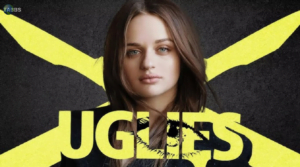Unexpected Laughter: AI’s Unconventional April Fools’ Capers

AI: Revolutionizing the culture of pranks
As technology advances, we find ourselves approaching a new era where artificial intelligence (AI) becomes an integral part of our daily routines. But what happens when AI gets involved in April Fool’s Day celebrations? Prepare yourself for a future trip where even your home appliances may have a naughty streak.

Personalized Jokes:
Companies and organizations have embraced AI technology to create hilarious and imaginative pranks for April Fools’ Day. Past examples include Google’s Tulip talking AI and Amazon’s celebrity-voiced Alexa, demonstrating AI’s potential for playful interactions.
Virtual Reality Shenanigans: Immersive Tricks
The integration of virtual and augmented reality opens up new avenues for April Fools’ hijinks. Picture yourself stuck in a never-ending Zoom meeting or donning your VR headset to encounter virtual spiders crawling across your desk through AR glasses. AI accuracy ensures these jokes hit close to home, challenging your perception of what’s real and what’s not.
Crossing the Fine Line: From Laughter to Litigation

While AI-powered pranks offer endless comedic possibilities, there’s a risk of entering more problematic territory. A harmless joke can quickly turn sour if it disrupts important meetings or compromises safety, such as altering presentation slides or turning self-driving cars into pranks. Striking the balance between humor and harm becomes paramount in the era of AI pranks.
AI pranks past and present: A glimpse into the future
A look back at previous AI-related April Fools’ jokes provides insight into what’s to come. From Google’s Tulip talking AI to Amazon’s celebrity-voiced Alexa, these playful announcements point to AI’s potential to inject humor into our lives. However, they also highlight the importance of distinguishing between harmless entertainment and genuine misinformation.
Embrace the future with caution and laughter
As AI continues to evolve, so does the nature of April Fools’ Day pranks. While we anticipate an era of innovative mayhem, it’s important to approach it with a combination of caution and humor. As we navigate this brave new world of AI-enhanced humor, let’s remember to back up our digital lives and maintain our sense of humor. After all, in the age of AI, laughter may be the best defense against unexpected surprises.
Table of Contents
What are some examples of AI-powered April Fools’ pranks?
Companies and organizations have embraced AI technology to create humorous and imaginative pranks for April Fools’ Day. Past examples include Google’s tulip-talking AI and Amazon’s celebrity-voiced Alexa, showcasing AI’s potential for playful interactions.
What are the risks associated with AI pranks?
While AI pranks offer entertainment value, there’s a risk of unintended consequences. Pranks that disrupt important tasks or mislead individuals can result in confusion, frustration, or even legal implications. Balancing humor with responsibility is crucial when incorporating AI into April Fools’ Day celebrations.
How can individuals distinguish between harmless AI pranks and misinformation?
Discerning between harmless humor and misleading information is essential in the age of AI pranks. It’s important to verify the credibility of prank announcements and consider the potential impact on individuals’ perceptions and actions. Maintaining a critical mindset ensures that April Fools’ Day remains enjoyable and lighthearted.
What precautions should individuals take when participating in AI-enhanced April Fools’ Day activities?
When engaging in AI-driven April Fools’ Day activities, individuals should exercise caution and consider the potential consequences of their pranks. Prioritizing safety, respect, and transparency ensures that humor remains the focus while minimizing any unintended harm or confusion caused by AI-enabled pranks.



